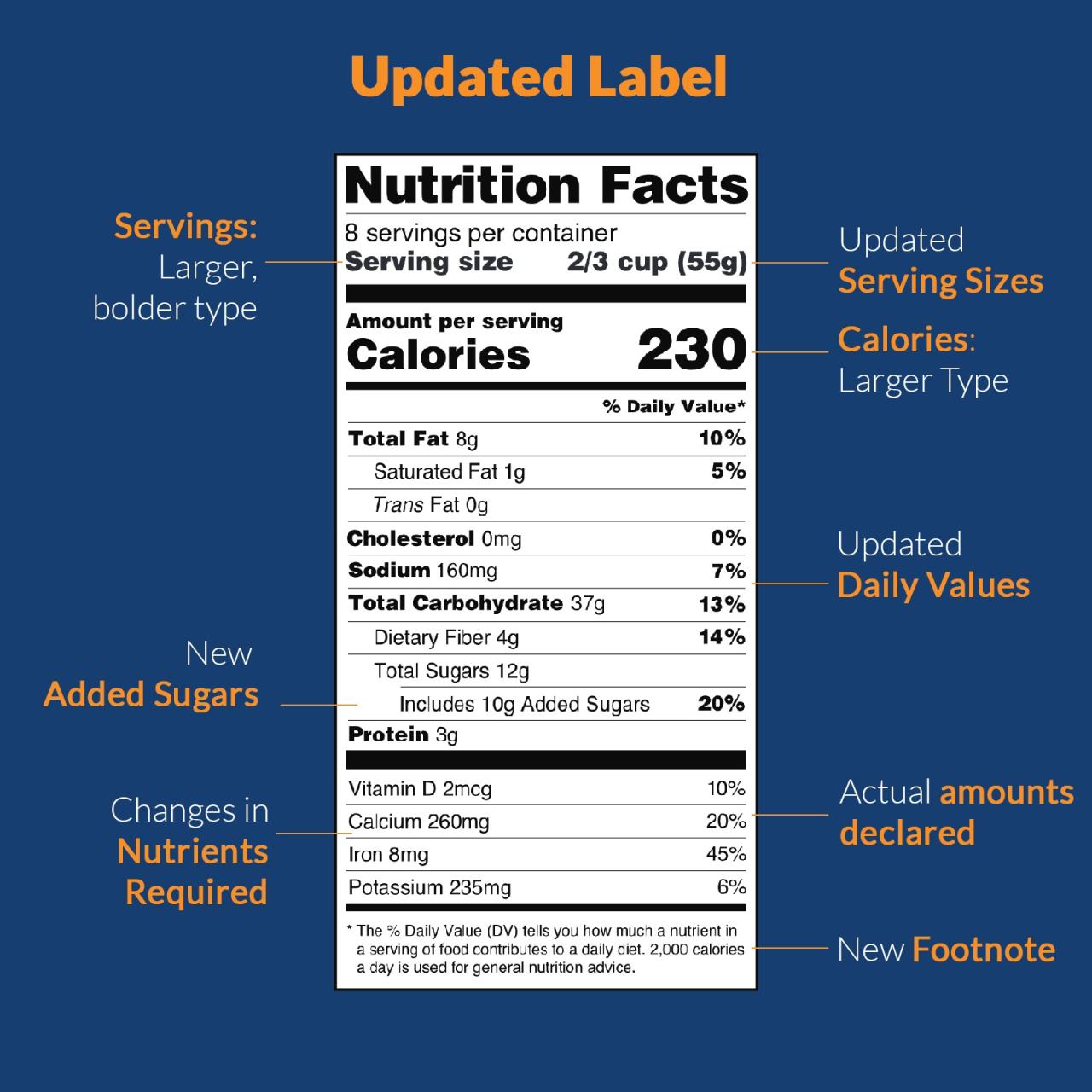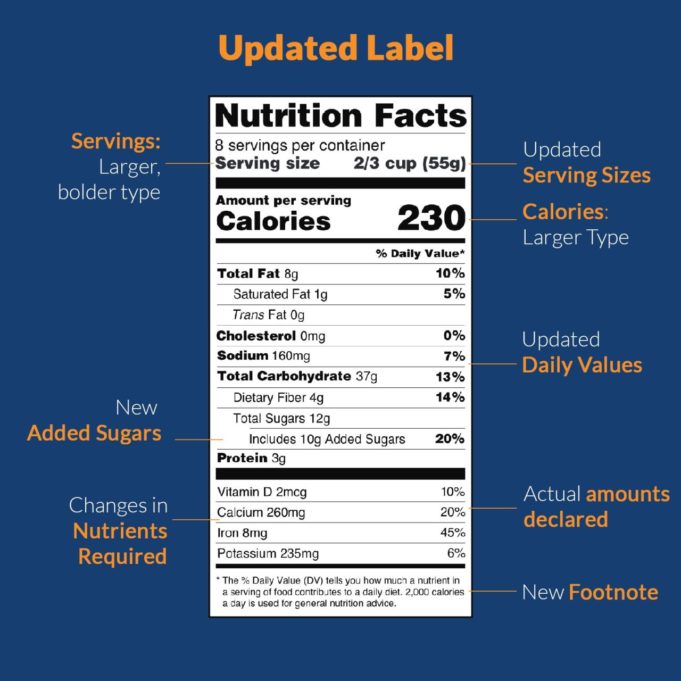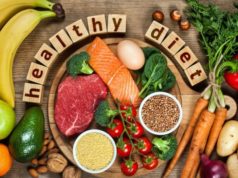Nutrition Facts, those little boxes on food packaging, are more than just a list of numbers. They’re a window into the world of food, offering a glimpse into the ingredients and nutritional value of what we consume. Imagine them as a secret decoder ring, helping us decipher the language of food and make informed choices about what goes into our bodies.
This journey will unveil the secrets hidden within these labels, exploring their history, purpose, and how they empower us to navigate the complex world of nutrition.
From understanding serving sizes and calorie counts to deciphering the intricacies of macronutrients, we’ll embark on a quest to demystify the information presented on these labels. We’ll explore how to use them to make healthy choices, manage dietary restrictions, and even prevent chronic diseases.
Buckle up, food enthusiasts, as we delve into the fascinating world of Nutrition Facts!
Understanding Nutrition Facts Labels
Have you ever stared at a food label, feeling like you were reading a foreign language? Don’t worry, you’re not alone. Nutrition facts labels can be a bit overwhelming, but understanding them is key to making informed choices about what you eat.
Let’s break down the mysteries of these labels and learn how to decode them.
The History and Purpose of Nutrition Facts Labels
Nutrition facts labels have a fascinating history, dating back to the 1960s when the U.S. government began recognizing the growing concern about the link between diet and chronic diseases. The idea was to provide consumers with the information they needed to make healthier choices.
We all know the drill: eat your veggies, drink your water, and avoid the sugary siren song of processed snacks. But did you know that your diet can actually impact your mood and energy levels? If you’re feeling sluggish and down, maybe it’s time to explore some Weight loss strategies for improving mood and energy.
You might be surprised how much a few tweaks to your nutrition facts can make a difference in how you feel!
The first mandatory nutrition labeling regulations were introduced in 1990, requiring all packaged foods to display a standard nutrition facts label. This revolutionized the way people viewed food, paving the way for a more informed and conscious approach to nutrition.
Key Components of a Nutrition Facts Label
The nutrition facts label is like a mini-report card for your food. It provides a snapshot of the nutrients you’re about to consume. Here are the key components and their significance:
- Serving Size:This is the standard amount of food that the label is based on. It’s crucial to understand the serving size because the nutritional information is calculated for that specific quantity. For example, a bag of chips might list a serving size as 1 ounce, but you might eat 2 or 3 ounces.
It’s essential to adjust the calories and nutrients accordingly.
- Calories:This is the amount of energy you get from consuming that serving size. Calories are essential for our bodies to function, but too many calories can lead to weight gain. It’s a good idea to be mindful of the calorie count, especially if you’re trying to manage your weight.
- Total Fat:This includes all types of fat, including saturated, unsaturated, and trans fats. Fat is an essential nutrient, but too much saturated and trans fat can increase your risk of heart disease.
- Cholesterol:This is a type of fat found only in animal products. High cholesterol levels can contribute to heart disease.
- Sodium:Sodium is a mineral that helps regulate fluids in our bodies, but too much sodium can lead to high blood pressure.
- Total Carbohydrates:This includes sugars, starches, and fiber. Carbohydrates are our primary source of energy.
- Dietary Fiber:Fiber is a type of carbohydrate that our bodies can’t digest. It’s important for digestive health and can help regulate blood sugar levels.
- Total Sugars:This includes all sugars, both natural and added. Added sugars are those that are added to foods during processing. It’s important to limit added sugars, as they can contribute to weight gain and other health problems.
- Protein:Protein is essential for building and repairing tissues. It’s also important for maintaining a healthy immune system.
- Vitamins and Minerals:The label may also list the amount of certain vitamins and minerals, such as Vitamin D, Calcium, Iron, and Potassium. These nutrients are essential for various bodily functions.
Comparing Nutrition Facts Labels Across Different Countries or Regions
Nutrition facts labels are not always the same across the globe. While the basic principles are similar, the specific requirements and presentation can vary. For example:
- The United States:The U.S. nutrition facts label uses a standard format with specific requirements for serving size, calorie content, and nutrient amounts. It also includes a list of daily values (DVs), which are percentages of recommended daily intake for each nutrient.
- European Union:The EU nutrition facts label is similar to the U.S. version, but it uses slightly different units of measurement and includes a list of recommended daily intakes (RDIs) instead of DVs. It also requires information on certain ingredients, such as sugars and saturated fats.
- Canada:Canada’s nutrition facts label is very similar to the U.S. version, but it uses metric units and includes a list of daily values (DVs). It also requires information on trans fats.
It’s important to be aware of these differences when comparing nutrition facts labels from different countries or regions. Remember that the specific requirements and presentation may vary, but the overall goal is to provide consumers with the information they need to make informed food choices.
Interpreting Nutrition Information
Now that you’ve mastered the art of reading a nutrition facts label, let’s dive into the exciting world of deciphering its secrets. Understanding the information presented on a label empowers you to make informed choices about your food and drink.
Serving Size and Nutrient Intake
Serving size is the foundation upon which we build our understanding of a food’s nutritional profile. It’s the standard amount of food that the label uses to calculate the listed nutrients.
Nutrition facts are like the instruction manual for your body, telling you what it needs to run smoothly. But sometimes, you want to switch things up and try a different engine – that’s where the keto diet comes in.
It’s like a turbocharged version of your metabolism, fueled by fat instead of carbs. So, whether you’re sticking to the classic manual or going for a high-octane upgrade, remember that understanding nutrition facts is always key to keeping your body in tip-top shape.
- The Importance of Serving Size:Serving sizes can vary significantly from what we typically eat, so it’s crucial to pay attention to this information. A serving of chips might be a handful, but a serving of cereal could be much larger.
- Calculating Nutrient Intake:Once you know the serving size, you can calculate your actual nutrient intake by multiplying the values listed on the label by the number of servings you consume. For example, if a serving of yogurt contains 15 grams of protein, and you eat two servings, you’ve consumed 30 grams of protein.
Key Nutrients, Nutrition facts
Understanding the key nutrients listed on a label is essential for making healthy choices. Here’s a breakdown of some key players:
- Calories:Calories represent the energy our bodies obtain from food. The total calories listed on the label indicate the amount of energy you consume per serving.
- Fat:Fat is a vital nutrient, but too much can lead to health problems. The label breaks down fat into categories:
- Total Fat:The total amount of fat in a serving.
- Saturated Fat:A type of fat that can raise cholesterol levels. Aim for a lower intake of saturated fat.
- Trans Fat:An unhealthy type of fat that should be limited.
- Protein:Protein is essential for building and repairing tissues.
- Carbohydrates:Carbohydrates are our body’s primary source of energy. The label provides information on total carbohydrates, as well as:
- Dietary Fiber:A type of carbohydrate that our bodies can’t digest, but is important for digestive health.
- Sugars:Sugars are simple carbohydrates that can contribute to weight gain and other health issues if consumed in excess.
Daily Recommended Values and Percentage Daily Values
Daily recommended values (DV) and percentage daily values (%DV) provide valuable context for interpreting nutrient information.
- Daily Recommended Values (DV):The DV represents the amount of a nutrient that is recommended for daily consumption based on a 2,000-calorie diet.
- Percentage Daily Values (%DV):The %DV indicates the percentage of the daily recommended value that a single serving of the food provides. For example, a food with 10% DV of Vitamin C provides 10% of the recommended daily intake of Vitamin C.
Nutrition Facts and Dietary Choices
The nutrition facts label is your secret weapon in the battle against unhealthy eating habits. It’s like a decoder ring for food, revealing the good, the bad, and the downright sneaky ingredients hiding inside your favorite treats.
Using Nutrition Facts for Informed Choices
The nutrition facts label is a powerful tool that can help you make informed decisions about what you eat. It provides a wealth of information about the nutritional content of a food, including calories, fat, carbohydrates, protein, vitamins, and minerals.
This information can be used to:
- Compare different food options:You can use the nutrition facts label to compare the nutritional content of different food options within the same category. For example, you could compare the nutritional content of different breakfast cereals or different brands of yogurt. This allows you to choose the option that best fits your dietary needs and goals.
You know those nutrition facts labels on food? They’re like a little game of “spot the hidden calories” – sometimes you’re surprised by what lurks within! But if you’re looking to shed a few pounds, those numbers become your best friend.
Want to learn how to strategize your way to a healthier weight? Check out this guide on how to lose weight and you’ll be well on your way to a leaner, meaner you! Of course, remember to keep those nutrition facts in mind – even a healthy diet can sneak in some extra calories if you’re not careful!
- Control portion sizes:The nutrition facts label can help you control your portion sizes. It provides information about the number of calories and other nutrients in a serving. This can help you avoid overeating and stay within your daily calorie and nutrient goals.
- Make healthier substitutions:The nutrition facts label can help you make healthier substitutions for your favorite foods. For example, you could choose a lower-fat yogurt or a cereal with less sugar. These small changes can add up to a big difference in your overall diet.
- Identify hidden sugars and fats:The nutrition facts label can help you identify hidden sugars and fats in foods. This is especially important for processed foods, which can often be loaded with added sugars and unhealthy fats.
Comparing Nutritional Content
Let’s take a look at how nutrition facts labels can help you compare different food options. Here’s a comparison of the nutritional content of three popular breakfast cereals:
| Cereals | Serving Size (g) | Calories | Total Fat (g) | Sugar (g) | Fiber (g) |
|---|---|---|---|---|---|
| Cereal A | 30 | 150 | 1 | 12 | 2 |
| Cereal B | 30 | 130 | 0.5 | 8 | 4 |
| Cereal C | 30 | 110 | 0 | 5 | 6 |
As you can see, Cereal A has the highest calorie and sugar content, while Cereal C has the lowest. Cereal B falls somewhere in the middle. If you’re looking for a lower-calorie, lower-sugar option, Cereal C would be the best choice.
However, if you’re looking for a cereal with more fiber, Cereal B might be a better option.
Using Nutrition Facts for Portion Control
Let’s say you’re craving a bag of chips. The nutrition facts label tells you that a serving size is 1 ounce, which contains 150 calories and 10 grams of fat. If you eat the entire bag, which is 5 ounces, you’ll be consuming 750 calories and 50 grams of fat.
That’s a lot more than you bargained for!
“The nutrition facts label is your guide to making smart choices about your food. Use it wisely!”
The Role of Nutrition Facts in Health

The nutrition facts label on packaged foods is more than just a list of numbers; it’s a powerful tool for making informed choices about your health. Understanding this label can help you prevent chronic diseases, manage your weight, and make sure your diet meets your individual needs.
Preventing Chronic Diseases
Understanding the nutrition facts label can play a crucial role in preventing chronic diseases. By making informed choices based on the information provided, you can reduce your risk of developing conditions such as heart disease, type 2 diabetes, and some types of cancer.
The key to preventing chronic diseases lies in consuming a balanced diet that prioritizes nutrient-rich foods and limits processed foods, saturated and trans fats, added sugars, and sodium.
Key Nutrients for Specific Health Outcomes
- Heart Health:Focus on foods low in saturated and trans fats, cholesterol, and sodium. Prioritize foods rich in fiber, potassium, and magnesium, which help lower blood pressure and improve heart health. Examples include fruits, vegetables, whole grains, and lean protein sources like fish and poultry.
- Weight Management:Pay attention to calorie content and the amount of added sugars in your food. Choose foods that are nutrient-dense, meaning they provide a lot of nutrients for relatively few calories. Examples include lean proteins, fruits, vegetables, and whole grains.
- Bone Health:Ensure adequate intake of calcium and vitamin D. These nutrients are essential for strong bones and can help prevent osteoporosis. Examples include dairy products, leafy green vegetables, and fortified foods.
Managing Dietary Restrictions or Allergies
The nutrition facts label is essential for individuals with dietary restrictions or allergies. It provides information on key allergens, such as peanuts, tree nuts, milk, eggs, soy, wheat, fish, and shellfish. It also lists added sugars, which can be a concern for individuals with diabetes or other health conditions.
This information allows individuals to make informed choices and avoid potential health risks.
Beyond the Label
The nutrition facts label is a great starting point for understanding the nutritional content of food, but it’s not the only source of information available. Many resources beyond the label can provide comprehensive dietary information and help you make informed food choices.
Government Agencies and Food Labeling Regulations
Government agencies play a crucial role in ensuring the accuracy and completeness of nutrition information on food labels. The Food and Drug Administration (FDA) in the United States sets standards for food labeling, including the required information on nutrition facts labels.
The FDA also monitors food manufacturers to ensure compliance with these regulations.
Last Recap
So, the next time you find yourself staring at a nutrition label, remember that it’s not just a bunch of numbers – it’s a powerful tool. Armed with the knowledge gleaned from this exploration, you can confidently navigate the grocery aisles, making informed decisions about your food choices and ultimately taking control of your health.
After all, knowledge is power, and when it comes to nutrition, knowledge is delicious!
FAQ Insights
What does “Daily Value” mean on a Nutrition Facts label?
Daily Value (DV) represents the percentage of a nutrient that a serving of food contributes to a daily diet based on a 2,000 calorie diet. It helps you compare the nutritional content of different foods and make informed choices.
Are Nutrition Facts labels mandatory in all countries?
While most countries have regulations regarding food labeling, the specific requirements and format of nutrition facts labels can vary. It’s essential to check the regulations for the country where the food was packaged.
Can I rely solely on Nutrition Facts labels for all my dietary information?
While Nutrition Facts labels provide valuable information, they don’t encompass everything. It’s essential to consult with a registered dietitian or healthcare professional for personalized dietary advice.
























